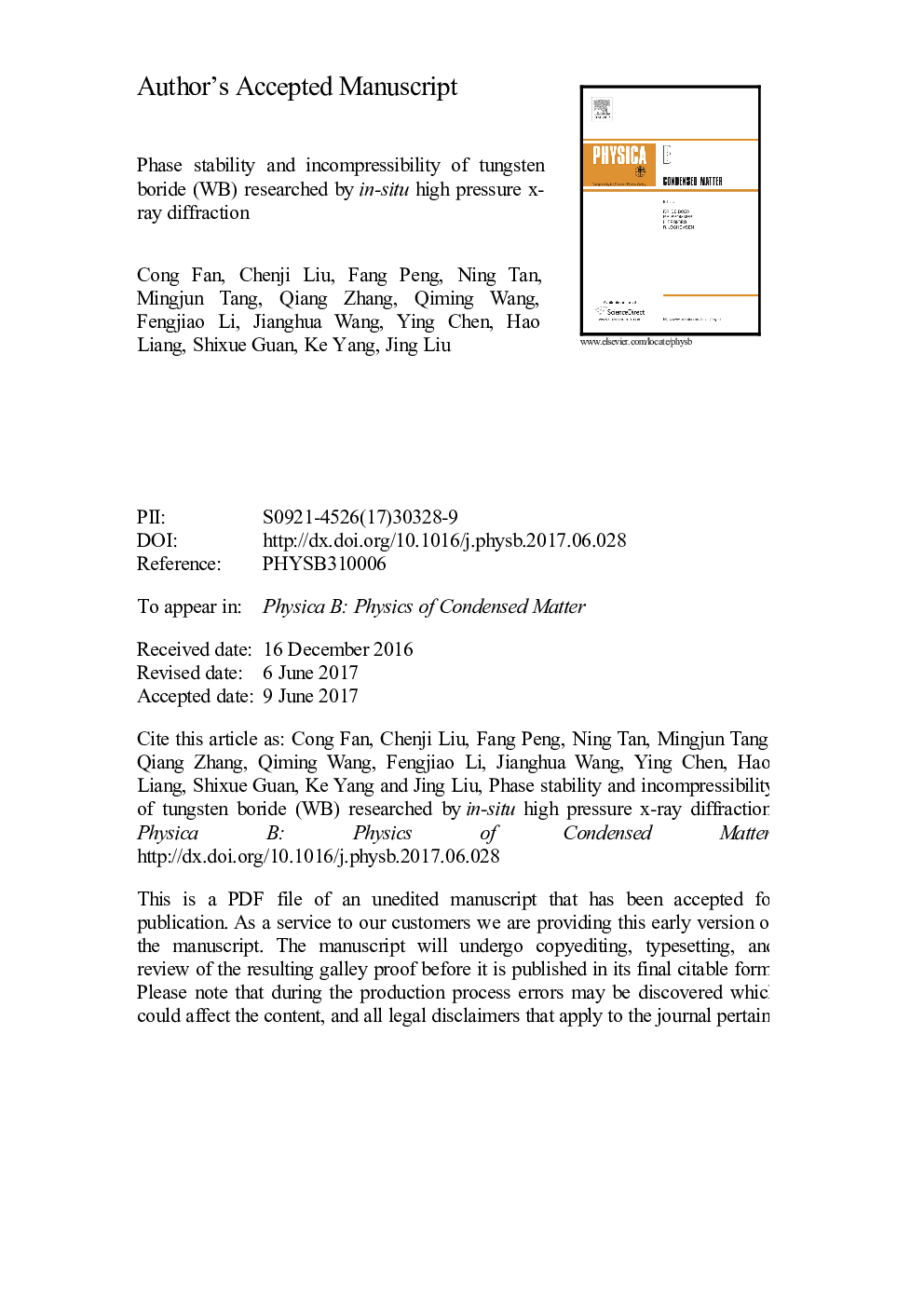| Article ID | Journal | Published Year | Pages | File Type |
|---|---|---|---|---|
| 5491774 | Physica B: Condensed Matter | 2017 | 27 Pages |
Abstract
The binary tungsten boride, WB, has potential industrial applications as it not only has a high melting point but is generally harder and less compressible than the pure metals. Here, the physical and mechanical properties (phase stability, bulk modulus and compressibility) of WB were investigated by in situ high-pressure x-ray diffraction and theoretical calculations. Its crystal structure still remains stable even at the highest pressure of 63.7Â GPa and room temperature for the diamond-anvil cell experiments. The pressure-volume (P-V) data were fitted using the Birch-Murnaghan EOS and the Vinet EOS to obtain the isothermal bulk modulus, K0 = 452 (4) GPa and 451(3) GPa and its pressure derivative, K0â² = 4 (fixed) in the two sets of experiments with two different pressure transmitting mediums (PTMs), respectively. The excellent bulk modulus (K0) is attributed to the high valence electron density of W atom, the layered and chain-like crystal structure of WB and the strong chemical bonds formed by W and B atoms. Besides, anisotropic compression behavior of the unit-cell axes (a- and c-axes) of WB is manifested by experimental observations and theoretical calculations. This remarkably elastic property is closely related to the strongly directional bonding between W and B atoms.
Related Topics
Physical Sciences and Engineering
Physics and Astronomy
Condensed Matter Physics
Authors
Cong Fan, Chenji Liu, Fang Peng, Ning Tan, Mingjun Tang, Qiang Zhang, Qiming Wang, Fengjiao Li, Jianghua Wang, Ying Chen, Hao Liang, Shixue Guan, Ke Yang, Jing Liu,
